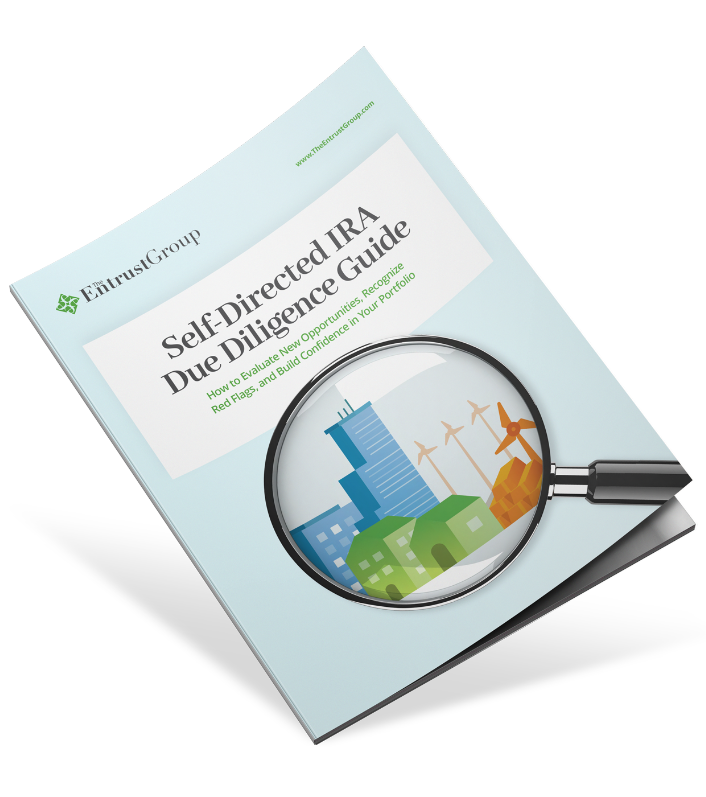Private Lending is the Passive Income Strategy You May Have Overlooked

Estimated reading time: 5 minutes
Have you ever wanted to invest in a local business or loan money to a friend for their kitchen renovation? This type of investment is called private lending, and you can do it with a self-directed IRA (SDIRA).
What is Private Lending?
Private lending, sometimes called peer-to-peer lending, allows you to use your SDIRA funds like a bank and invest in debt-based assets, or loans, that matter to you. You might have heard people refer to private lending as hard money lending. This is because the loan is often issued and secured based on the value of collateral, usually real estate, rather than the credit of the borrower. But loans aren’t necessarily secured. They can also be unsecured which means they are not backed by collateral.
Loans usually fall into one of these four categories: personal loans, business loans, mortgage notes, and equipment or automobile financing.
A loan investment made by a Self-Directed IRA (SDIRA) requires the creation of a promissory note. A promissory note is a written promise to repay debt under specified terms. Unlike private equity, a loan is repaid with interest rather than as an investment in exchange for shares of a company.
When considering debt-based assets, you might also hear the terms performing and non-performing notes. Quite simply, performing notes are notes that are being repaid according to the loan terms, while non-performing notes are loans where the borrower is in default. Just like any investment, it is important to do your due diligence and understand the terms and status of any debt-based asset you invest in.
Why Invest in Private Lending?
When you want flexibility and the opportunity to invest in smaller businesses or more personal projects, private lending makes that possible. If this is one of your top investing priorities, you may be a Community Builder. Compared to the other five types of investors, Community Builders are focused on making a positive impact with their portfolio, often at the local level.
You have the ability to seek out investments that fit with your goals and earn interest on the money that you lend. Private lending is a popular strategy for people who want to earn passive income. Lending money to someone investing in real estate or business allows you to get in on the action without having to purchase the property or manage the day-to-day affairs of the business.
Private lending is also a good option for people and small businesses to acquire capital without using traditional lenders. Because private lending does not go through traditional loan channels, the money can be available more quickly.
It can also work well when someone cannot qualify for a traditional loan. Because of the higher level of risk and the difficulty of recovering the capital in the case of default, these types of personal and commercial loans are often shorter terms and offered at a higher interest rate than a loan acquired through traditional lending.
What Type of Loans Can You Invest In?
Mortgage notes are one of the most popular private lending investments. Using private lending to invest in real estate is a win-win for lenders and real estate investors. Private lenders can reap the benefits of a real estate project without taking on the whole project, and investors can get the capital they need quickly and without the hurdles that a traditional lender might have in place.
There are endless options. It can be a good choice for investors who want to lend money to help a small business get off the ground or to provide purchasing power for a business to acquire more inventory as they grow. Private lending can also be used for personal loans, buying automobiles and machinery, educational expenses, or even helping someone pay off debt.
What’s the Process to Invest in Private Lending with an SDIRA?
In order to loan money from your SDIRA, you will need to create a promissory note. A promissory note allows you to dictate the terms of the loan, the repayment timeline, an interest rate, and even what happens if the borrower defaults or does not repay the loan according to the terms. You are responsible to decide if the note will be secured or unsecured. Just like any investment in an SDIRA, the account holder is responsible for all the due diligence when researching any investment.
To brush up on you due diligence skills, download our Self-Directed IRA Due Diligence Guide. Inside, we've included dozens of questions to ask before considering adding any new opportunity to your SDIRA.

Self-Directed IRA Due Diligence Guide
If you already have an SDIRA, then you’ll be glad to hear that using your SDIRA to lend money is similar to other investments.
- Once you have funded your SDIRA, you are ready to invest.
- Do all the necessary due diligence when selecting investments.
- Draw up the loan specifics such as a timeline for repayment and terms.
- Initiate the note investment.
- For a private lending note (any note but mortgage notes), complete and submit an Alternative Asset Investment Request on the Entrust Client Portal.
- For a mortgage note, complete and submit a Real Estate Note Investment Request on the Entrust Client Portal.
- Entrust will review all your documentation to be sure everything is compliant.
- Once everything is accepted, Entrust will send the funds to your borrower.
If you don’t already have an SDIRA with Entrust, it’s easy to get started. Go to our Open an Account page and follow our easy online steps. If you’d like to read about ways to fund your account, we have an article about the differences between transfers, rollovers, and contributions so you can choose the method that is best for you.
What Are the Rules for Investing in Private Lending?
If you are using your SDIRA to loan money, you have to remember that all the rules and regulations when investing with an SDIRA are still in force. You cannot engage in prohibited transactions or lend money to a disqualified person. This includes not lending money to businesses owned by disqualified persons. Be sure to check out our guide on the rules and regulations to make sure you are preserving the tax-advantaged status of your SDIRA.
The potential for passive income through private lending is at your fingertips with an SDIRA from Entrust. If you have other questions, you can always go to our private lending page, or schedule a one-on-one consultation with one of our knowledgeable staff members.
Or, if you'd like to learn more about specific private lending assets, watch a replay of our recent webinar, What You Should Know About Real Estate-Backed Lending. In this session, we spoke with Dave Goldberg from the Investor's Source for a 101 education on trust deeds.
In essence, trust deeds are a way to use real property as security for a loan, much like mortgages. The key difference is that mortgages involve two parties: the borrower and the lender. In contrast, deeds of trust involve three parties: the borrower, the lender, and a trustee. Learn more about the potential pros and cons of this asset in our webinar replay below.




























0 Comment